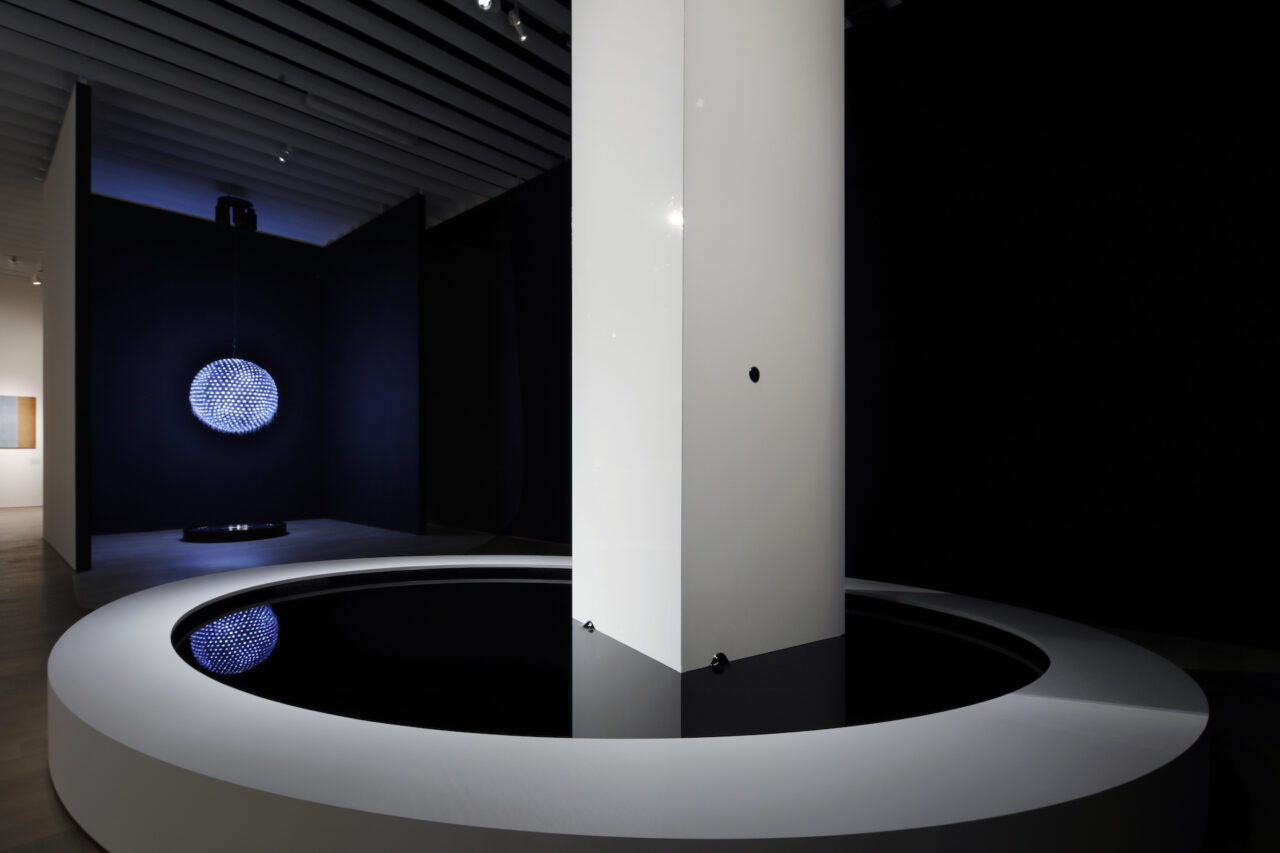Jeff Wall
On The Interplay of Visual Intricacies, Cinematography & the Fragility of Memory
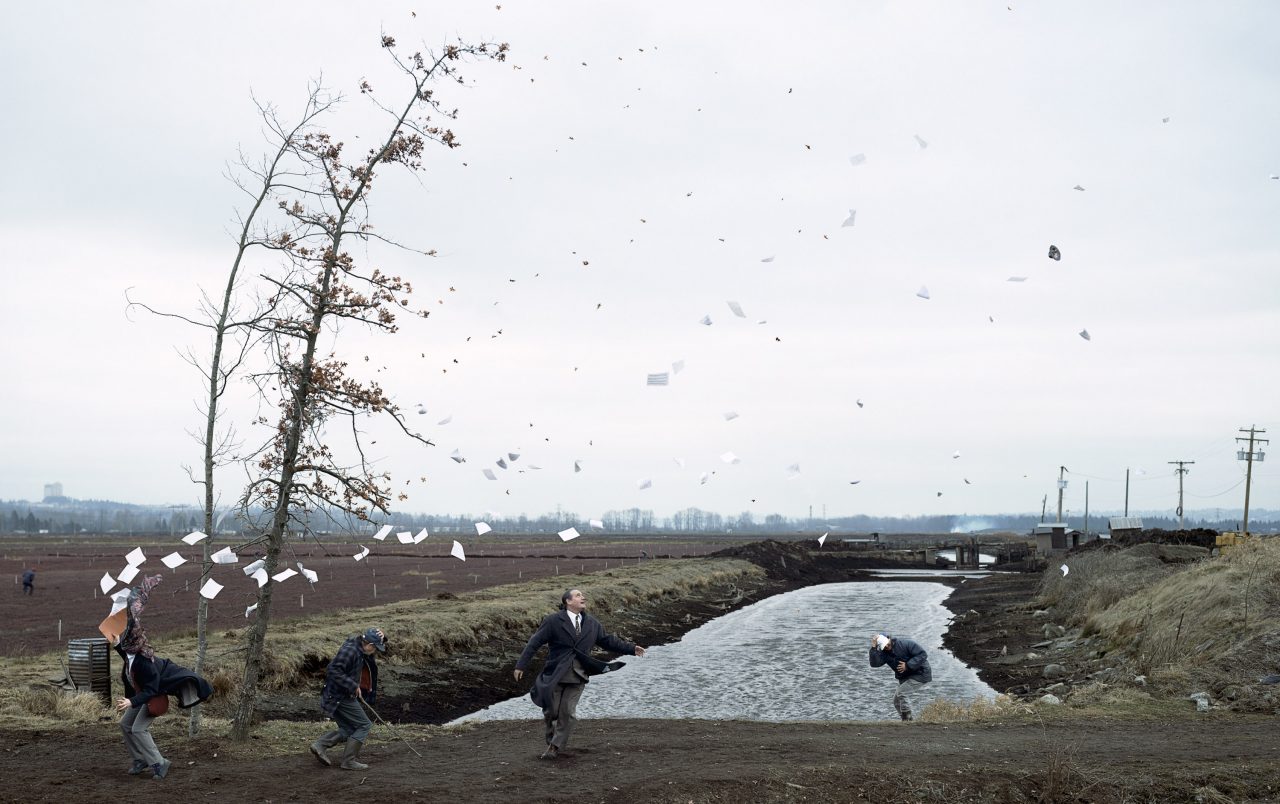
For Canadian photographer Jeff Wall, the visual intricacy of cinematography plays a heavy influence on his large scale works which encase a similar element of poetic complexity. Each photograph is staged and recreated from a memory of a previous occurrence and moment experienced, or an enhanced scenario.
Wall’s exhibition and published title of the same work, ‘Photographs’, showcases his work spanning 1978-2010, featuring the intricately encompassing and iconic photographs from the artist’s career. In a gallery space, they are fascinating and intriguing, their large figures seem to dominate their presence and there is an element of seduction as they are each illuminated and encased in light boxes. The physical illuminosity from the transparencies, delightfully impart an immediately heightened experience.
This unique perspective is Wall’s recognisable style. The photographs make you look twice, longer and deeper, furthermore subconsciously encouraging you to find your own relatability to the image and for a moment pondering your own daily nuances and interactions. Wall has certainly played a key role in discussion of photography as a contemporary art form. Coming from a background in painting, there is a distinct inspiration in his works from Édouard Manet and Hokusai, and a contemporary interest in writers such as Ralph Ellison, through which seeps an influence of artistic reference into his iconic photographs; A Sudden Gust of Wind (After Hokusai) 1993, and After “Invisible Man” by Ralph Ellison, the Preface (1999–2001).
Each viewer is the best individual critic. The images unintentionally explore discussion on feminism, racism, social ideals and capture the unseen moments of every day life. Perhaps it is driven by a sense of right place right time, but there is certainly a complexity in Wall’s work that is instinctively recreated in the large scale works.
Prolific in capturing unique moments, yet carefully structuring their recreation and their presentation is Wall’s oeuvre. Champ Editor Joanna Kawecki sat with the prolific photographer to explore his early beginnings, his thoughts on the true essence of photography, and how good work is undetermined by it’s longevity of time and purpose and surviving generations.
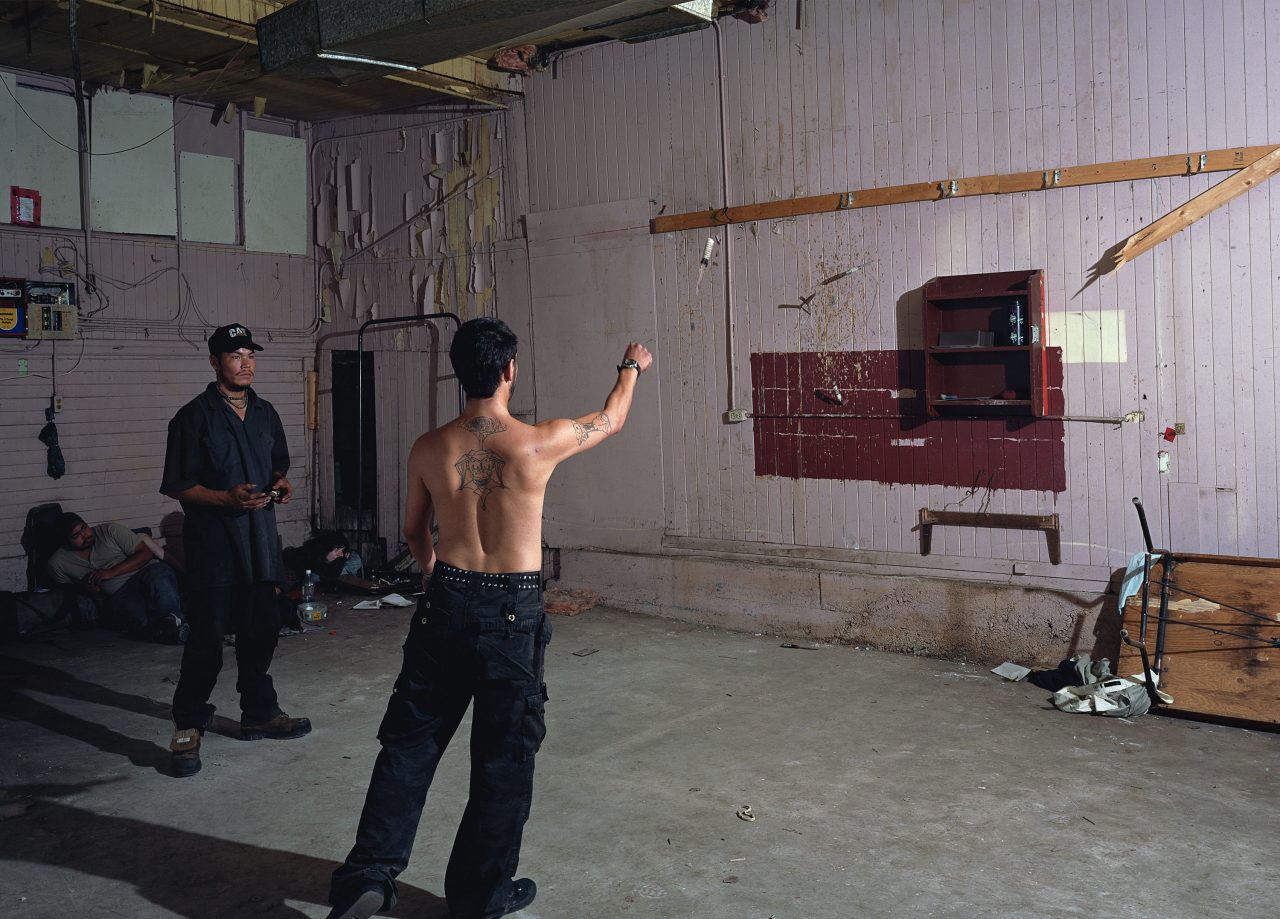
Joanna Kawecki: Jeff, I can imagine your intuition plays a big part in your work.
Jeff Wall: I think it’s the freedom. One of the most things I like about my so-called method, is that I have a lot of freedom. I’m not bound to there even being an occurrence. I can just pretend there was an occurrence, or I can have relation to a real occurrence, or I can blend the two, etc. That creates a kind of freedom that I find very much like a poet, or composer, or even a painter. I like the fact that photography could have that freedom at least in terms of where its first impulse comes. It doesn’t always have to be reportage, although reportage is gonna be there all the time. I can use it anytime I need to, so that memory creates a sort of a free space.
Your work is large-scale, that had initially been inspired by bus stop transparencies you had seen once. Do you think that this additional lighting provides an additional realism?
Realism, I don’t know. Actually, I’m not making light boxes at the moment, I haven’t made them for more than 5 years now. I mean, I will go back at some point. It gives me a chance to see it from a slightly different vantage point. I don’t think that the light adds anything to the nature of the image itself. That is, it doesn’t make it any more realistic, doesn’t make it any more unrealistic. It adds a physical illuminosity which I think has its own aspect, or its own dimension in the experience. So we look at the picture differently, and therefore experience is affected by some sort of light source or lamp, and I think that has a lot of implications if you wanted to draw them out. But I’ve made images, I’ve made versions of some of my pictures that were originally light boxes on paper, and I’m not noticing that the image undergoes some sort of strange transformation, becomes another kind of picture. It does however become another kind of experience, because it’s not made the same way. So I find it intangible of what the light does – obviously does something – but i’m not sure of what it really does in sense of changing the meaning, the type of picture, or anything like that. It doesn’t seem to do anything, but it does change the immediate experience.
So initially, the reason you began working with the light boxes was for aesthetic?
It’s such a long story, that I’ll tell it as briefly as I can. It was partly circumstance, as in the 70’s colour photography was technically limited in the way that it is now. One of the big limitations was, the impermanence of most of the materials. I didn’t like the idea of making impermanent images, I wanted my pictures to last so that people could have a chance to see them over time. It really troubled me that a lot of the current materials were so unstable. The most stable material, at that time, was called cibachrome. It was much more permanent that all the others, but I didn’t like the cibachrome paper, and the guy in the lab asked if I had thought about transparent paper which they used for advertising. I hadn’t thought about it, and he said, ‘well why don’t you give it a try, it’s the same chemistry, but its just not on paper. you just have to have lights behind it and so on. ‘’ I thought that it was kind of cool and didn’t know anyone who had really done that. I had never thought about it, or about photography in that way really. At that moment I was going away for the summer, and I went away to Europe. I was riding around buses and trains going all over Spain, and was coming back from Madrid and kept passing the bus stations with all of these lighted signs. I did make the connection between the lighted sign, and the paintings and the Prado, however already in Vancouver I was talking about it and it was already on my mind. So when I got back to Vancouver in ‘77, I thought ok, ill try this and it had this pretty striking look. I thought, the medium is interesting, the technical problems are interesting, I like the way the picture looks, its not conventional, it’s something different. I wanted to start my work, and this was an exciting starting point.
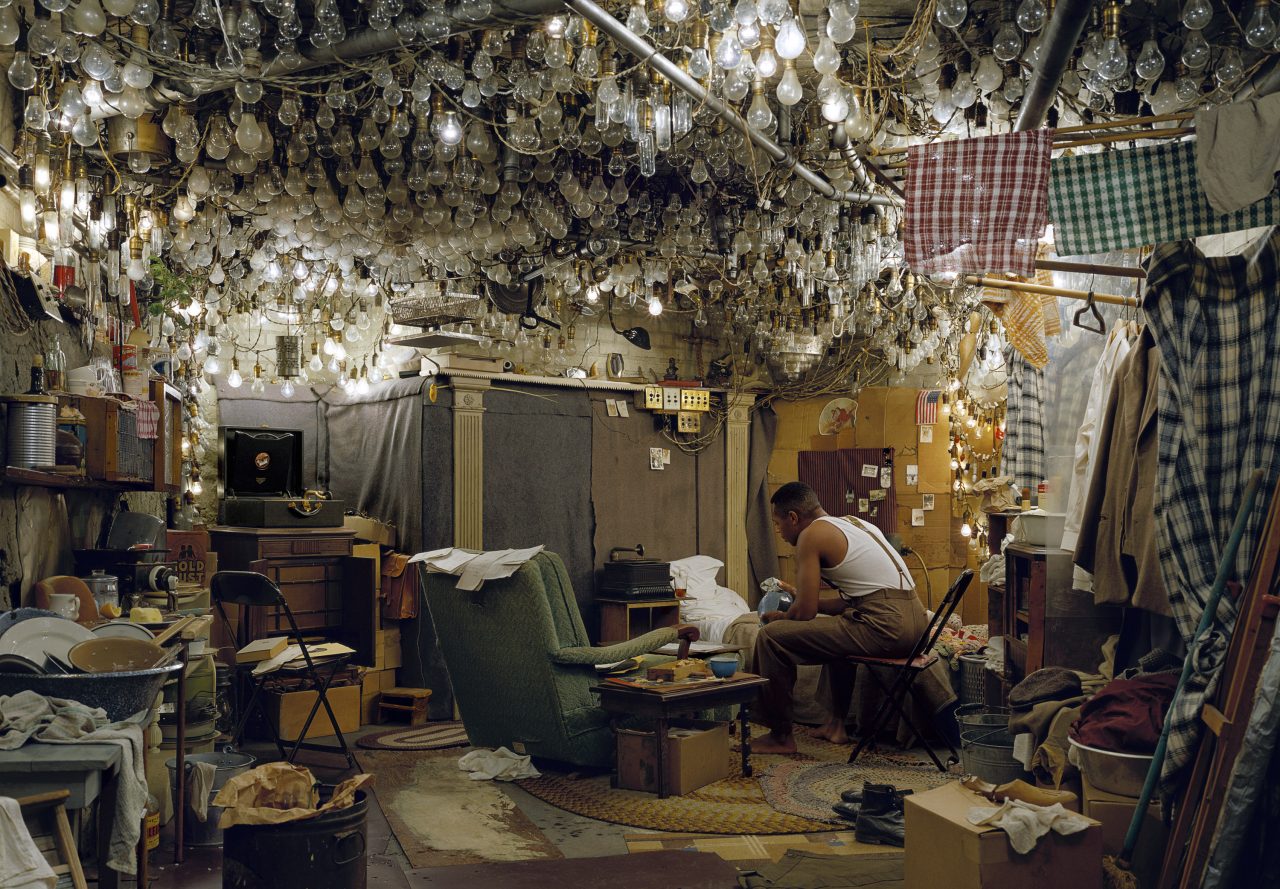
Interviews can be tedious. But I’ve watched a few of your interviews online, and you’re fairly diligent in the way that you speak and how you explain your work and photography as a whole. Being interviewed, you are talking about your work, but why are you further speaking about your work – is it to educate the listener or do you enjoy it?
I don’t know if I particularly like it, but I don’t mind doing it. It doesn’t make me nervous, and it’s a topic I know quite a bit about so I don’t have to study up beforehand, and that makes it kind of easy. So it’s no trouble, I think people enjoy it and I’m not trying to so much as educate people. I was an educator, I was a teacher for many years so I know what teaching is like, and I’m trying not to do any of that now. I’m just trying to talk on what’s on my mind at the the time, but the same things are always on my mind, and that’s the problem. They’re always the same things, so when people ask me about my work, they just circle around the same issues like what does it mean to call work good, do I know I’m doing something that’s worthwhile, how do I know, how do I judge what I’m doing, how do I make the next picture according to some standard of goodness that I think I understand. They are all the problems fascinating to others because they are the ones you never call. You’re always back to the beginning, you’re always in first art class. You never get out of it, its’ just always what you do in that class. And so, that’s why I think there’s always something to do in new situations, about things that are fundamental. So I try to stick with the fundamentals and what people find most inspiring.
Your photographs are compositions taken from a memory or previous recognised artwork. What is memory to you, and how important is it to you- whether it is in our daily lives, or in how we choose to bring it to our work.
It’s very sad to meet someone who is having memory loss, when they’re older or beyond their control. You realise as they do, that their whole personality is going to vanish, and they won’t even be them anymore. Our mind is our memory, or our memory is our mind. It’s something that we can’t really define. When you think about your own memory, you can’t touch it or locate it, it’s fluctuating. I mean, I forget so many things people tell me things about what I’ve done and where I’ve been and I can’t remember, and it’s very frustrating. Memory is always a very complicated, present and absent thing. So of course it means it a lot. It became important in my work because I decided, or at least I began not to chase the world with a camera, and capture it as it occurred. Freeze it for all time, like many photographers have done, and what many people have blamed is the essence of what photography does. I agree that is the essence of what photography does, but just because it is the essence of what photography does, doesn’t mean that we have only one relationship to it. I began to feel fascinated by missing out on photograph- ing the occurrence, the situation, and allowing it to stay with me in a nontechnical way, as it means there’s no record of it. It’s just there. So the memory goes to work, and then I guess I have a way of making it do things, and move toward some activity of reconstruction or translation. I see things that become other things. I might see something that happens to me and I think that’s a beginning point, and as I work on it it becomes something else.
There are many discussions based on this photograph (“Picture For Women” 1979) whether its feminism, or a different theory surrounding it. Firstly, what was your initial thoughts behind creating the image, and secondly, do you still feel that same way 33 years later now about the image?
Do I feel the way I felt then? I couldn’t, because its 33 years later, and things have changed. So I can’t feel the same, and I couldn’t have felt the same after I had made it as I had felt before i made it, and when I was making it, because once I’d made it, I changed my relationship to it because I’d done it. So I look back at it to see whether I feel it still measures up. As I was saying yesterday, whether it measures up to some judgement, that could make up it’s goodness. That’s something I do all the time, and that is the most compelling thing to me. Do I still think its any good, and was it worth doing in the first place, and so on. That’s more important to me than what it might of meant then or now, to me. I don’t think I could really tell of what it might have meant at the time. I wanted to work in the studio, it was one of the first few pictures I managed to do when I really started to get active, and I was into the studio as a space. Like the way that Thomas Demand had mentioned that he was essentially photographing the inside of a studio. It’s fascinating to me, because I realised, thats what I was doing. Furthermore, in order to be in that studio, you had to make something occur there, to bring something there, it’s empty otherwise. For all sorts of reasons I wanted to bring photography together with that concept, with painting, and then with that painting by Monet which I’d seen for many many years or at least many many times over 3 years, and that painting had meant a lot to me. For artistic reasons, and personal reasons I guess. So it was one of those clusters of things that ended up resolving itself to a picture that said something about photography too. Of course there’s a mirror and a camera, and there’s a subject and there’s the perspective, which people have commented on because they love talking about those kind of conundrums of who’s looking into it.a
Or if it is a reflection, or indeed taken in front of a camera…
I don’t even really know why I called it Picture For Women. I must have been gaming a bit, playing a game with myself. Must have just popped into my head. It was a time where there was a lot of contentiousness about women being presented by men. It was ‘79, and maybe it was me just gaming my own face about it somehow. The title worked somehow, it’s really hooked people and they find it fascinating. Maybe the word FOR is in there and it’s as if it’s presented to or devoted to, women perhaps.
You take accompanying influences from art and paintings too…
Yes, for all sorts of reasons I wanted to bring photography together with that, with painting. Then with that painting by Monet, which I’d seen for many many years or at least many many times over 3 years, that painting had meant a lot to me. For artistic reasons, and personal reasons I guess, and so it was once of those clusters of things that ended up making, resolving itself to do a picture that said something about photography too, because of course there’s a mirror and a camera, and there’s a subject and theres the perspective, which people have commented on because they love talking about those kind of conundrums of who’s looking into it.
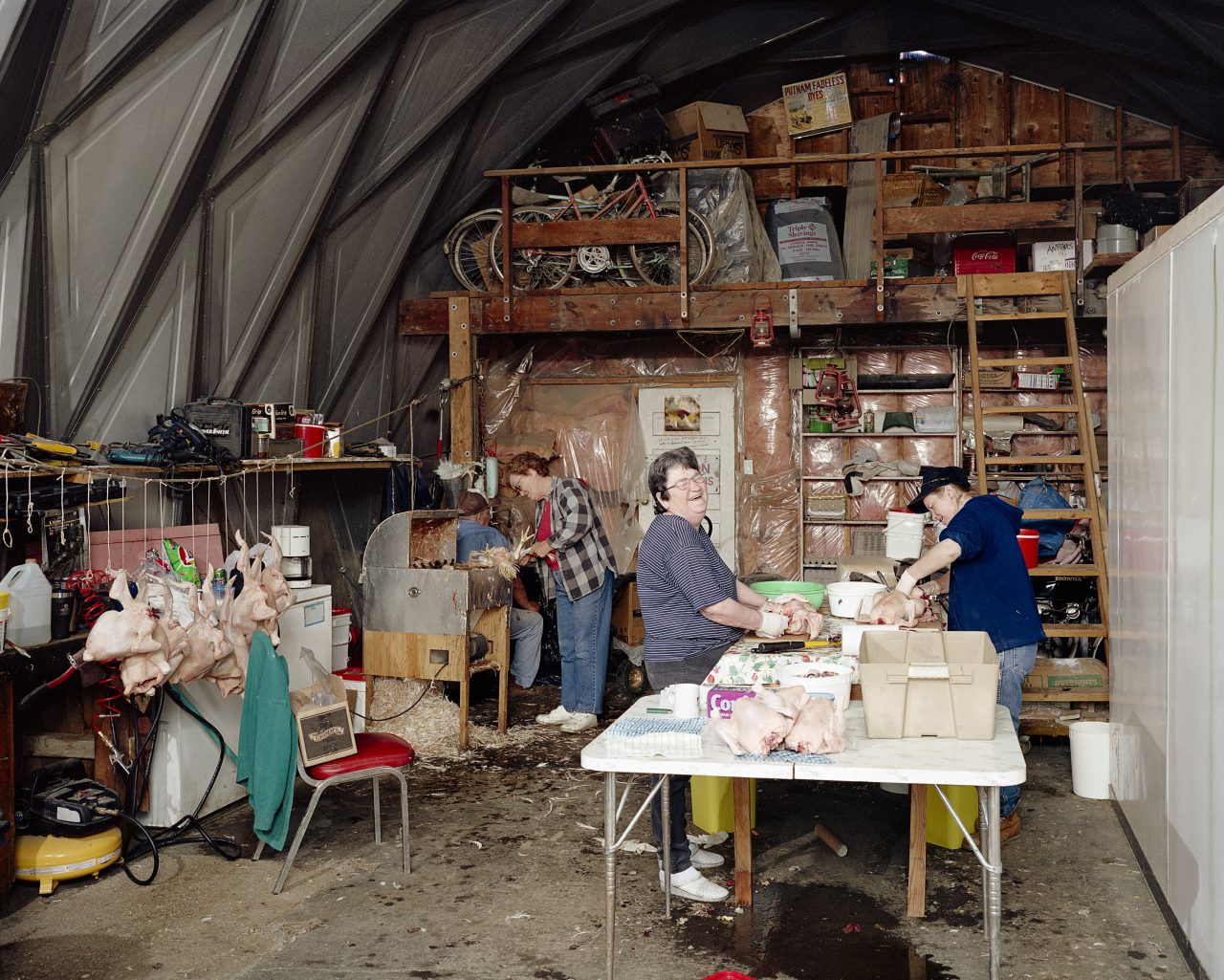
With After “Invisible Man” by Ralph Ellison, the Preface (1999–2001) why did you select to recreate this moment from the novel?
It was an accident, almost all of my pictures I’ve done started out from unexpected encounters. Some what I see in the street, or at a place. It could be something that someone tells me, or it could be something that I have read. At some point I realised, or it flashed upon me, as I was reading that book, that that was the picture. If you read the passage, it’s pretty obvious it’s a picture as it is so pictorially described. In fact I’d wondered why nobody had wanted to make a film about that book, and film that scene which would have been quite something. So it just seemed to me a such a natural idea. I remember putting it aside for a while thinking it might be really too obvious to do this, i’ll sit and think about it and try and be a bit critical. But it came through, and I finally decided that I really could do it. I really love the book, I think it’s a wonderful image that has a lot of meaning, to was fascinating to do and it was a technical challenge. I had to create a ceiling that was covered by lamps, but not just covered, had to have shapes and flows in it, so that there’s a whole galaxy going on the ceiling. Some are lit, some aren’t. They all worked, but over the time of working I realised it wasn’t as interesting working with all of the lights on. Plus it was unbearably hot. I doubt the man underneath would have been able to keep them on for more than 10 minutes in his place, he would have roasted! But he did use those lights for making toast, and making melted cheese sandwiches. He could fry an egg up there! There’s a little divide hanging from the ceiling, and you could see bits of cheese hanging down from it, where he toasted his cheese under the bunch of very hot lights.a
Have you seen the Undercover (Jun Takahashi) store in Tokyo, or concession space in Dover Street Market London? He has a similar concept of the abundant lights.
The similar light pattern has shown up in a few places. In fact, even in a car commercial or something it appeared. Someone sent me the link for a Porsche maybe, I can’t remember what car it was. But the person enjoying the car passed through a space that looked a lot like that. These days, a lot of artists’ work gets recycled into the mass community.
Some of your works are created in the studio, but for example, A Sudden Gust of Wind (After Hokusai) 1993 you created on location and for a decent duration of time with 100 images.
I work in my studio only when I need to, otherwise I work in real places.
What is the most fascinating location where you’ve photographed?
They are always fascinating to me when I’m doing them, and the one I’m working on is always the most fascinating. So I can’t really pick one like that because for me, when I’m working I’m hungry and I’m desperate to get a picture in the location. I’m very attached to that place and I’m paying a lot of attention to it, and I get very involved in it. So always the most fascinating one is the one happening now.
You’ve mentioned that cinematography is very important to you.
Are you able to share some of your favourite cinematographic moments in film?
There is probably 500 films that could qualify. What I mean by cinematography, is it is a way of doing photography. It might not have to result in film, but mostly of course it does result in film. Cinematographers have the freedom to invent styles, they have the obligation to make a different look, maybe in each film they do. They have equipment that is extremely inventive, they use interesting equipment to make things happen. They solve complicated problems all the time, and they practice a kind of photography that is so flexible, many-sided that I like it as a model. I like it better than the idea that a photographer is a person with a camera, and a certain kind of camera and that’s the only equipment he has, and he only goes into the world and captures things. I know this is as I said, is true (the true essence of what is a photographer), but it’s only one way of really practicing photography. Cinematography opens up the idea of more complexity, more or less complexity. You don’t have to make decisions. There are films that are made very cheaply, just with a camera and no lights, that could be great examples of cinematography. There can be films made on enormous sound stages with huge trucks of equipment and artifice galore, that are also examples of good cinematography. They are both equal examples of what that approach can do.
Do you think then although on a lower budget and less resources, is it more admirable for someone to create something incredible with less resources than someone who has more?
No, because sometimes having more makes everything harder. Because, we have much more to manage, the inertia is enormous so if you make a decision you go in a certain direction and its not a good one. its very hard to change directions at that point. So no, I think its just as hard to be good when you’re young as when you’re old, just as hard to be good when you have little resources, as when you have a lot. It’s always the same, it’s just how you work with what you have.
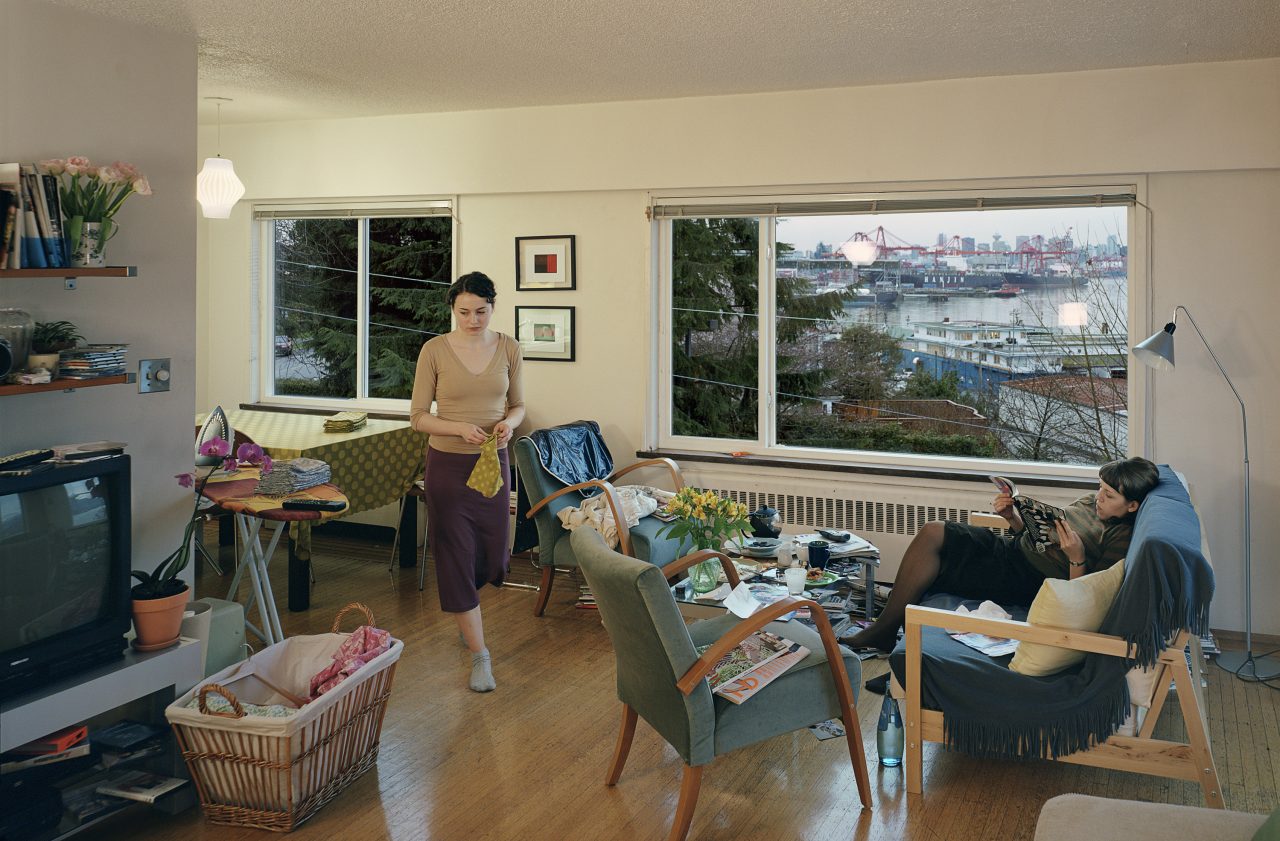
With cinematography, is it different because they are photographing something that is already happening that they have no control over. They are just the medium that captures it already, rather than a photographer who creates it.
No, I think a cinematographer is part of the group who creates the whole thing. They tend to have more control than a street photographer who really doesn’t have any control, who just has opportunity. So control is a funny word, it’s not quite what I mean. But if you want to have a lot of input into the beginning point of what you’re photographing, then that’s one mode of cinematography. You might build a whole little town, and then photograph it or something. That kind of control is interesting, if it interests you. Some people have claimed that what I’m saying is cinematography is better than reportage photography. I’m not saying anything of the kind, I’m saying it’s an interesting open field for anyone who finds any part of it open to them. Any part of it that fascinates them, there are doors to this big place, and they’re all different doors, and they enter you into this domain of different angles with different levels, and so on. So, I think that I’m only one of people who’ve learned a lot from cinema, and so yes, i can give you a long list of films if you want to.
Your images have also been used in another medium for music. One of your images is a prominent album cover of Sonic Youth, The Destroyed Room: B-sides and Rarities, and also you took an album portrait for Iggy Pop. How has music inspired or influenced your work and what is the relation between that work there?
I don’t really like music very much and I don’t listen to it almost ever. I mean, I like music and I like that there is music. I dislike recorded music in places where I’m not there to listen to it. If I want to hear music I’d rather go and hear it live. Or, put on a record! So I don’t personally have a big connection with music, but I have had it in a way in all my life. My generation have listened to all kind of popular music since the beginning of the 50’s when it happened, so sort of being there, I know its had an effect on me, and I think probably some of the attitudes that exist in popular and not-popular music that embed into my taste. I don’t really like my pictures being used in anything except hanging on the wall, I would never let them be used for anything other than that. But, Sonic Youth, I knew them years ago and we were sort of friends and they asked me if they could use it on the cover and so I agreed because they’re friends. I wouldn’t have done it for someone that I didn’t know.
And one day, Iggy Pop called me up and left a message on my answering machine that said, ‘Hi this is Iggy Pop, I like your photos, would you consider shooting my album cover?’ I thought, I don’t shoot album covers so I won’t do this. But a good friend of mine was a big Iggy Pop fan and said he’d kill me if I don’t do it. So I said, ok fine. I’ll do it. And I set the conditions because I didn’t want to do it. I made Iggy Pop come to Vancouver, and I made him give me a certain number of days, and he did all that. But it was fun, we had a good time. I’m sure I’ll never do it again, not that I didn’t enjoy it, it’s just that it’s not quite my thing. It’s not what I do, I’m not a commercial photographer, I don’t take commissions from anybody. But I made an exception because someone asked me.
You’ve previously questioned on what is the lifespan of an artwork and what might be the quality in it for it to supersedes the generations of works. So I guess in that way, from your work how long do you want to make it last?
I want to make it physically capable of lasting an extremely long time because then it gets a chance. The chance being that people will continue to like it, to continue to judge it to be good, and include it in their repertoire of art they’d like to keep seeing. Maybe generations can do that. That’s what most artists probably expect if they have any expectations at all; is that people keep liking their work and they’ll become somebody and if your work doesn’t last, that can’t happen. So, I’ve always been sort of devoted to the ideas of ways to make my work survive.
∆
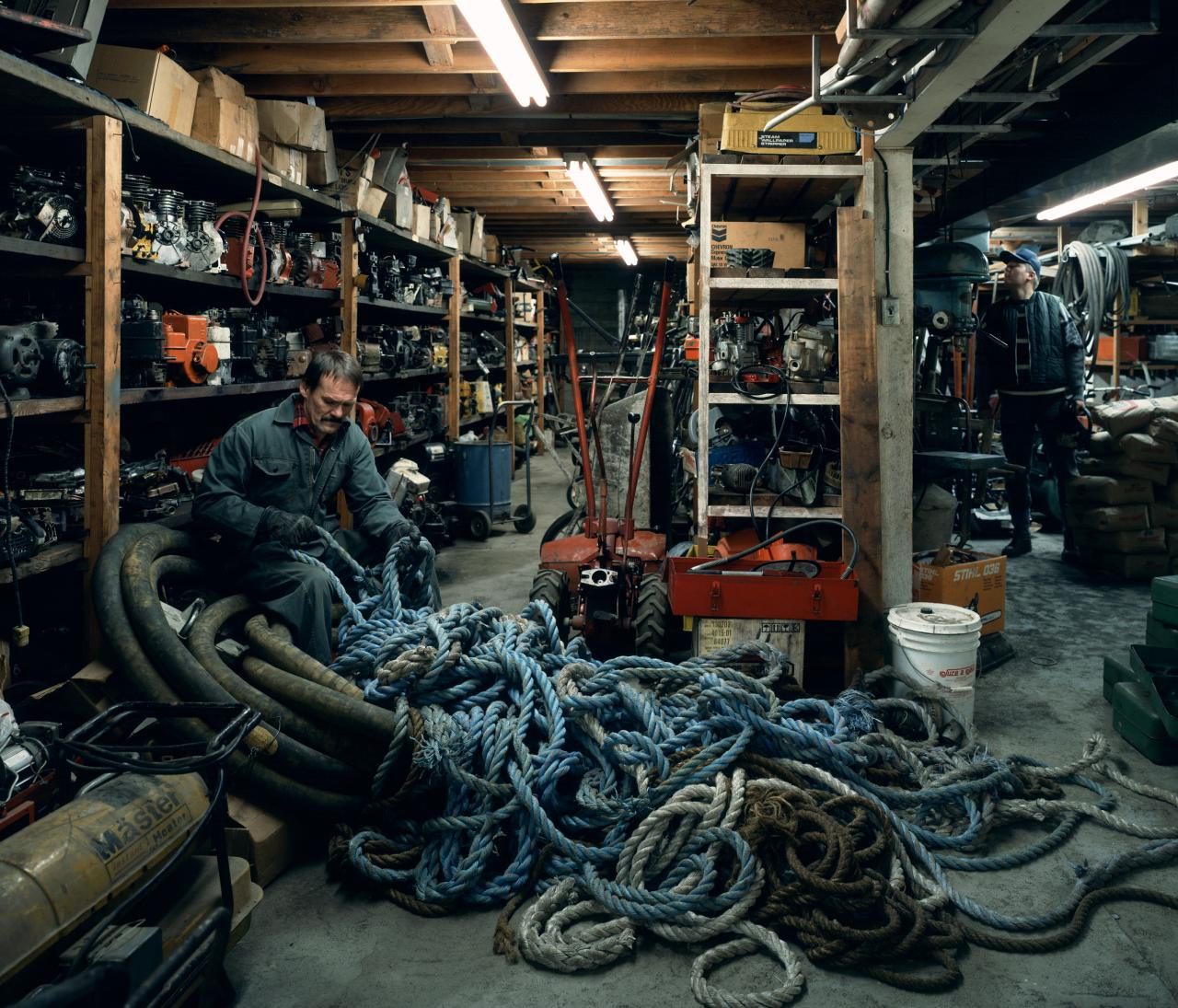
This interview was originally published in Ala Champ Magazine Issue 5, alongside the ‘Photographs’ at the National Gallery of Victoria.

















